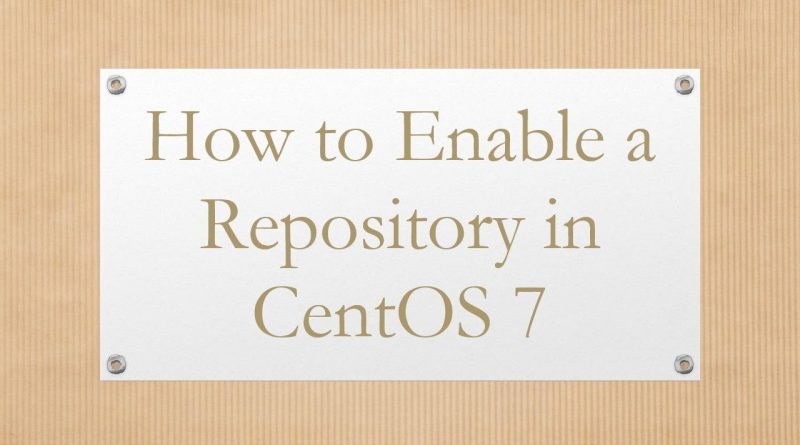How to Enable a Repository in CentOS 7
Disclaimer/Disclosure: Some of the content was synthetically produced using various Generative AI (artificial intelligence) tools; so, there may be inaccuracies or misleading information present in the video. Please consider this before relying on the content to make any decisions or take any actions etc. If you still have any concerns, please feel free to write them in a comment. Thank you.
—
Summary: Learn how to enable repositories in CentOS 7 using Yum, allowing you to access additional software packages and updates for your system. Follow these steps to enable repositories on CentOS 7 effortlessly.
—
Enabling additional repositories in CentOS 7 can provide access to a wider range of software packages and updates beyond the default repositories. This is particularly useful when you need specific software or updates that are not included in the base CentOS installation. Here’s a straightforward guide on how to enable repositories in CentOS 7 using the Yum package manager.
Checking Available Repositories
Before enabling a repository, it’s essential to know which repositories are available and suitable for your needs. CentOS 7 typically comes with the base repository enabled, but additional repositories like EPEL (Extra Packages for Enterprise Linux) or third-party repositories might be required for specific software.
You can list the currently enabled repositories by running:
[[See Video to Reveal this Text or Code Snippet]]
This command will display the available repositories along with their status.
Enabling a Repository
To enable a repository in CentOS 7, you’ll need to install the corresponding repository configuration package using yum. Here’s a general outline of the steps:
Identify the Repository: Determine the repository you want to enable. For example, to enable the EPEL repository:
[[See Video to Reveal this Text or Code Snippet]]
Replace epel-release with the appropriate package name for other repositories.
Confirm the Enablement: After installing the repository configuration package, the repository should be enabled automatically. You can verify this by checking the repository list again:
[[See Video to Reveal this Text or Code Snippet]]
The newly enabled repository should now be listed among the enabled repositories.
Optional: Disable a Repository: If needed, you can disable a repository by editing its corresponding .repo file in the /etc/yum.repos.d/ directory and setting enabled=0. This prevents yum from using that repository.
Using Enabled Repositories
Once a repository is enabled, you can use yum to install software packages from that repository. For instance, if you enabled EPEL, you can install a package from EPEL like this:
[[See Video to Reveal this Text or Code Snippet]]
Replace <package_name> with the name of the package you wish to install.
Conclusion
Enabling repositories in CentOS 7 expands the availability of software packages and updates for your system, enhancing its functionality and flexibility. However, it’s important to exercise caution when enabling third-party repositories to ensure compatibility and security. Always verify the source and reputation of repositories before enabling them on your CentOS 7 system.
By following these steps, you should be able to effectively enable repositories in CentOS 7 and leverage the broader software ecosystem available for this Linux distribution.
centos 7



